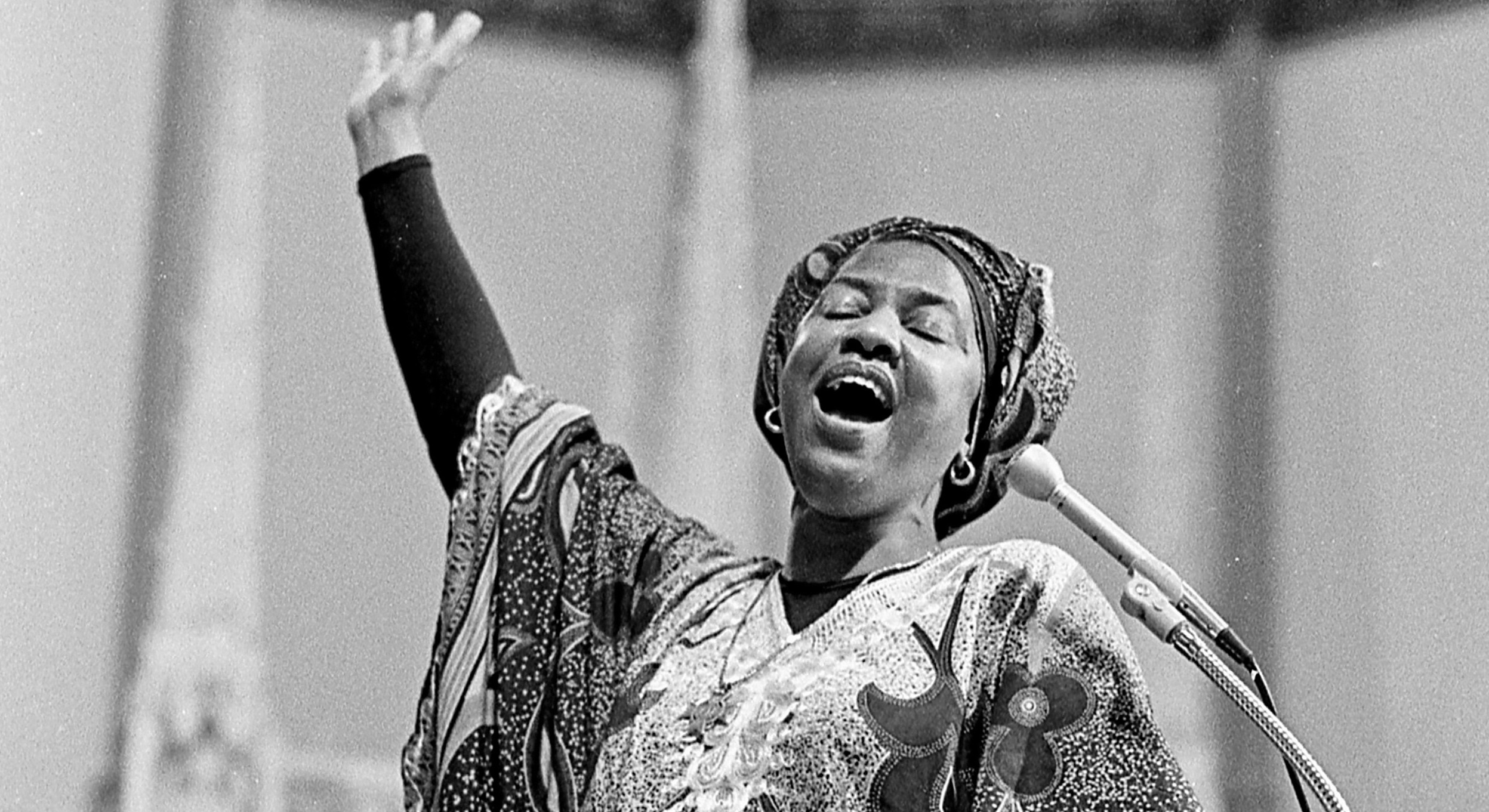Catholic University named a street after her. Georgetown University named a chapel in her honor. Many have called for her sainthood, and the United States Conference of Catholic Bishops voted to submit her cause for canonization to the Vatican. But who was Sister (now Servant of God) Thea Bowman – one of six African Americans being considered for sainthood – and what can she tell us about the experience of African American Catholics in this country?
Before joining the Franciscan Sisters of Perpetual Adoration, before earning a doctorate (her dissertation was on St. Thomas More), before becoming a teacher, evangelist, civil rights activist, and musician, Bertha Elizabeth Bowman was a little Methodist girl in Canton, Mississippi, born in 1937. She converted to Catholicism at age 9, and at 15, she demanded to leave for Wisconsin to join the Franciscan Sisters of Perpetual Adoration. Her father, himself a descendant of slaves, objected, fearing how she would be treated in an all-white congregation. Yet her persistence made him relent, and both her parents eventually joined her in the Catholic Church.
Taking the religious name Thea (Greek for “God”) after her father, Theon Bowman, she would gain multiple degrees and spend many years teaching, be it middle school, high school, or college at her order’s Viterbo College (now University) in La Crosse, Wisconsin; at her alma mater, The Catholic University of America in Washington, D.C.; and Xavier University in New Orleans, where one of her classes was teaching seminarians how to preach.
Yet her ministry was not limited to the classroom, as important as that is. After 16 years of teaching, in 1972 she finished her doctorate in English from Catholic University, and began to travel the country, at the request of the bishop of Jackson, Mississippi, speaking to promote civil rights, equality, and the Catholic faith.
While by that time integration had become a legal requirement, it was not always a physical reality, and wouldn’t be in many places for decades after. In a 1987 interview on TV’s 60 Minutes, she showed journalist Mike Wallace her hometown of Canton. When he asked if the town had become integrated since the passing of the civil rights acts over 20 years prior, she remarked: “How does it look to you?” He proceeded to say it didn’t look integrated; there were “white schools and black schools, still, white churches and black churches, still,” then asking why that was. “Legally,” she replied, “everything’s integrated, but there’s very little social interaction that is integrated,” she added, somewhat sadly. The impacts of segregation continue to be felt to this day, decades after nominal integration.

In 1978, Sister Thea requested to return to Canton to care for her aging parents. She continued her work locally as a consultant for intercultural awareness in the Diocese of Jackson. Both of her parents died in 1984. Tragically, that same year she was also diagnosed with cancer. That didn’t stop her, however. Free again to continue her travels, she returned to public speaking, culminating in a speech given to the nation’s Catholic bishops in 1989. Although years of illness had taken their toll on her voice, she began with a song, a traditional African American spiritual like the ones she had spent years promoting. She then asked a poignant question: What does it mean to be Black in the Catholic Church? She emphasized that inequality did not just occur in the world of politics, but right here in the Church.
“[D]espite the Civil Rights Movement of the ‘60s,” she said, “and the socio-educational gains of the ‘70s – Blacks in the ‘80s are still struggling – still ‘scratching and clawing’ as the old-folks say – still trying to find home in the homeland and home in the Church.”
As her audience of bishops listened, Sister Thea asked, “What does it mean to be Black and Catholic? For many of us, it means we haven’t been evangelized, haven’t been educated, haven’t been given a chance through the work in the Catholic Church,” as African Americans were “systematically kept out of the priesthood and out of most religious communities.”
But breaking those barriers wasn’t enough, she said. “You know, Bishop Jim Lyke said a long time ago that Black Catholic Christians will be second class citizens of the Church until they take their places in leadership beside their brothers and sisters of whatever race or national origin.” (Thankfully, those words are now closer to being realized, as our archbishop of Washington, Cardinal Wilton Gregory, has become the first African American cardinal). Then, referencing the Second Vatican Council’s call to honor various spiritual traditions, she repeated that doctrine, describing, “a (Black Catholic) spirituality that in the middle of your Mass or in the middle of your sermon, we just might have to shout out and say ‘Amen,’ ‘Hallelujah,’ (and) ‘Thank you Jesus!’”

On March 30, 1990 at the age of 52, Sister Thea succumbed to her illness, and was buried with her parents. Since then, calls for her sainthood have increased, and in 2018, the Diocese of Jackson opened the process, and she was recognized with the title Servant of God. Then, the Vatican Dicastery for the Causes of Saints will examine her life, and, if believing she led a life of heroic virtue, will declare her Venerable. If a miracle is attributed to her intercession, she will be beatified, and if another miracle is attributed to her, she will be canonized and recognized as a saint.
Regardless, her life was a great example for the Catholic Church in the United States, and Servant of God Sister Thea Bowman is a model for all Catholics everywhere. During Black History Month, we realize we must not overlook the incredible examples of our faith from the African American community.
(Gavin Ros is a student at The Heights School in Potomac, Maryland.)











